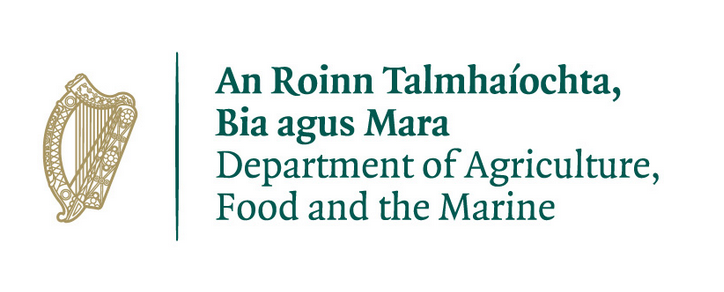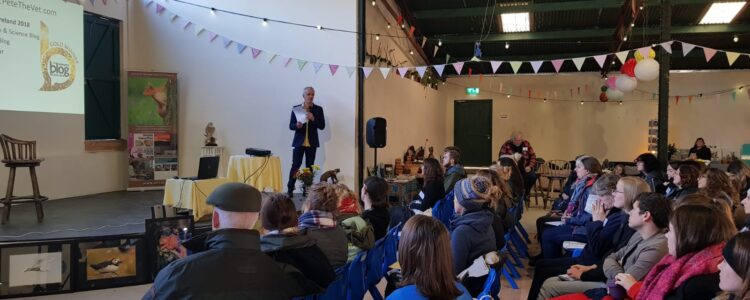
Irish Wildlife Rehabilitation Conference 2018
An fhiadhúlra athshlánúcháin chomhdháil na hireann 7 CVE credits
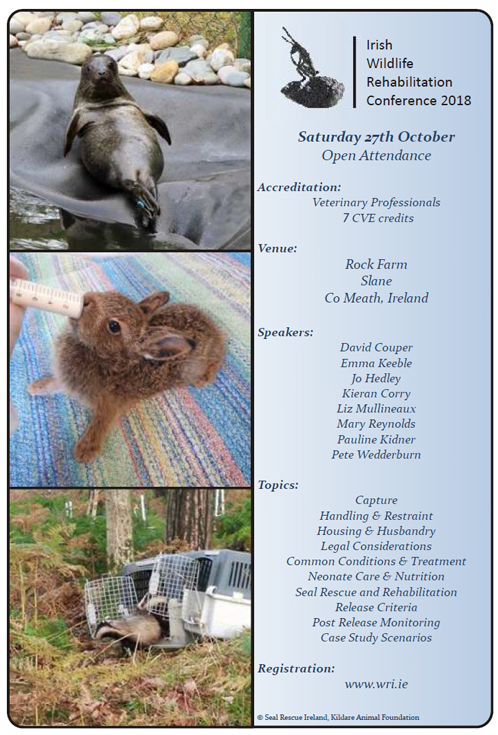
Venue
Venue: Rock Farm, Slane, County Meath, Ireland
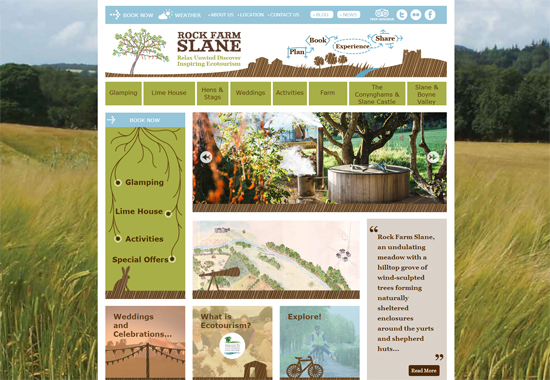
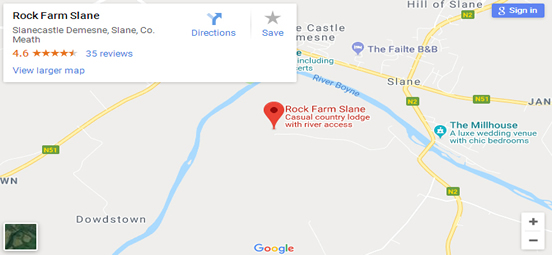
Click HERE or on the map to be redirected to Rock Farm location details
ACCOMMODATION OPTIONS
You can visit Rock Farm’s website to check availability HERE
Check out the accomodation section in the ‘Holiday Guide of the Boyne Valley’ HERE
Or there’s www.booking.com
Programme – Saturday 27th October 2018
Venue: Rock Farm, Slane, Co Meath
Delegates: Open Attendance
| 08.30 | Registration & Coffee | |
| 09.00 | Five reasons why it’s worth rescuing wildlife | Pete Wedderburn |
| 09.30 | That wild animal looks injured, what do I do? Primary assessment, triage and first aid of wildlife casualties | Elizabeth Mullineaux |
| 10:20 | Rescue and rehabilitation of seals | David Couper |
| 10.10 | Coffee | |
| 11.30 | How to assess, treat and care for avian casualties (Swans, gulls, pigeons and corvids) | Emma Keeble |
| 12.20 | Care and rearing of neonates | Pauline Kidner |
| 13.10 | Lunch & Exhibitions | |
| 14.00 | Release: general and species specific release conditions | Joanna Hedley |
| 14.50 | Wildlife casualty case study discussions – specific to Ireland | Kieran Corry |
| 15.20 | Coffee | |
| 15.45 | Wildlife casualty case study discussions – general | All speakers |
| 16.45 | Stepping into our fogotten roles as guardians of the earth | Mary Reynolds |
| 17.10 – 17.30 | Raffle & close | |
Speakers
WRI are delighted to welcome the following guest speakers to our Conference:
Kieran Corry
Kieran’s wildlife interest started at the age of 4 when he asked for a bird guide and a pair of binoculars for Christmas. As a profession he initially intended to become a marine mammal vet and did an externship with Harbor Branch Oceanographic Institute in the USA which included a capture and health assessment of wild bottlenose dolphins. After realising that marine mammal veterinary meant either research or working at sea world, Kieran quickly changed his mind about this career idea.
After graduating with first class honours from University College Dublin in 2005 he worked in a busy large and small animal practice in County Tyrone.
During breaks from working in practice, Kieran did voluntary work with Amazon Community Animal Rescue, Education, and Safety in Peru, and Pilpintuwasi Wildlife Rescue – a wildlife rescue and temporary custody centre located on 20 hectares of land 20 minutes outside Iquitos, the largest city in the Peruvian Amazon. Pilpintuwasi is dedicated to protecting animals affected by the poaching and trafficking industry which thrives in Iquitos.
To pursue this interest in the small animal field, particularly orthopaedic and soft tissue surgery, he moved to Birmingham to work in a progressive small animal practice where he expanded his skills. After moving back to Ireland in 2010, Kieran wanted to work in a practice that offered the highest standard of equipment and an ethos for veterinary care that matched his own. To this end, he now commutes from Tyrone to work in Clontarf Veterinary Hospital in Dublin.
On return to practice he took on any wildlife cases that came his way and rehabilitated them himself but was limited due to lack of proper facilities until he met Dan Donoher from Kildare Animal Foundation (KAF). Kieran is now able to concentrate on the veterinary treatment of Irish wildlife and leave KAF and Hedgehog Rescue Dublin to do the rehabilitation.His main wildlife workload involves surgical and medical treatment of traumatic injuries caused by humans.
David Couper
David has been the wildlife veterinary officer at the RSPCA’s West Hatch Wildlife Centre in Somerset for the past 13 years, where he mainly works with native wildlife. David also works with companion animals in the Domestic Centre which deals with Inspectorate-generated animals – cruelty cases, abandonments etc.
David graduated from Glasgow in 1996 and worked in mixed practice for about 5 years, and did an MSc in Wild Animal Health at the Royal Veterinary College / Institute of Zoology.
David has been to Canada a couple of times to do voluntary work on a Swift Fox reintroduction program, and has written the fox and bat chapter, and co-authored the otter chapter, for the 2nd edition of the BSAVA Manual of Wildlife Casualties.
Joanna Hedley
Jo qualified from Royal (Dick) School of Veterinary Studies in 2003 and spent time in mixed, small animal, exotic and wildlife practice before undertaking a residency in Exotic Animal and Wildlife medicine back at R(D)SVS where she obtained her RCVS Diploma in Zoological Medicine.
She is currently a RCVS specialist in Zoological and Wildlife medicine and European specialist in herpetological medicine. She joined the Royal Veterinary College in 2014 as Lecturer in Exotic Species and Small Mammal Medicine and Surgery. She is based at the Royal Veterinary College in Camden, where she is leads the exotics clinical service and is developing student teaching of exotic species.
Emma Keeble
Emma graduated from the University of Bristol in 1994 and gained initial experience in a mixed veterinary practice, before becoming a wildlife veterinarian for the RSPCA and then operating a small animal exotic referral service.
In 1999 she joined the University of Edinburgh Exotic Animal and Wildlife Service as a Resident in Zoo and Wildlife Medicine and obtained the RCVS certificate in Zoological Medicine. She then gained the post of Lecturer within the Service teaching veterinary students and lecturing in exotic animal, zoo and wildlife medicine. She gained her RCVS Diploma in Zoological Medicine (Mammalian) in 2006 and achieved specialist status in 2007, one of only a handful of UK vets to hold these qualifications.
She lectures to veterinary professionals nationally and internationally on exotic pet, zoo and wildlife medicine. She is published widely in veterinary books on exotic pets, wildlife casualties, reptile neurology and rabbit neurology, and has edited books on rabbit, ferret and rodent medicine and surgery and wildlife casualties. She is responsible for the Wildlife Emergency Clinic at Edinburgh Vet
school, which takes in wildlife casualties and emergencies brought in by the public. This is the first such clinic in the UK and provides a unique teaching opportunity for students, nursing staff and veterinary residents as well as providing triage and first aid to British Wildlife.
Pauline Kidner
Secret World was located at New Road farm which was originally a dairy farm ran by Pauline Kidner and her husband, After opening the farm to the general public in 1984, people started to bring orphan and injured wildlife to her. Pauline started a charity to help with the ever increasing cost of caring for wildlife and in 2000, the tourist attraction closed and Secret World became purely a wildlife and rescue centre.
Pauline is known particularly for her work with badgers having done rehabilitation of this species since 1992. As an ex farmer, she wanted to ensure that the rehabilitation of badgers was responsible. Working with government scientists, she started testing orphan badger cubs using the test available at the time and has been involved the creation of the Rehabilitation Policy for Badgers together with RSPCA and the Badger Trust.
The charity, which is run purely on donations, cares for over 5,000 wildlife casualties annually. Pauline is the Founder and Advisor for Secret World Wildlife Rescue.
Elizabeth Mullineaux
Liz Mullineaux BVM&S, DVM&S, CertSHP, MRCVS, has worked for over twenty years in first opinion veterinary practice, most recently as a director of a small animal veterinary hospital in Somerset. During this time she developed an interest in British wildlife medicine and in 2011 completed a clinical doctorate looking at ‘The factors affecting the rehabilitation and release of adult badger casualties’.
Liz has contributed to several veterinary texts and journals, and spoken at national and international conferences on the subjects of wildlife veterinary care, badgers and tuberculosis.
For many years Liz has worked closely with Secret World Wildlife Rescue and is currently employed as Scientific Advisor to this charity.
Mary Reynolds
Wildlife Rehabilitation Ireland is delighted to have the well known nature activist and landscape designer Mary Reynolds as Patron promoting the value of our work, in particular, our vision to build Ireland’s first Wildlife Rehabilitation & Teaching Hospital.
Mary designs gardens that marry the needs and wishes of the lands guardian with the needs and wishes of the land itself. With her roots in natural gardening theory, Mary seeks to create spaces that are healing, truthful and magical.
A Chelsea flower show gold medal winner, Mary has designed gardens internationally for more than 17 years, including commissions in Kew Royal botanical gardens in London as well as occasional stints of garden television presenting for RTE and BBC.
Mary has recently published a comprehensive and ground – breaking book; The Garden Awakening. Her new approach to garden design is a practical treasure map that leads gardeners into a gentle and healing relationship with the land. This beautiful book is a step by step instruction manual drawing on ancient methods of working with the land and using them to invite the power and energy of nature back into your life and surround your house and life in its life giving healing embrace. A feature length film: Dare To Be Wild based on Mary’s true life story made by Irish director Vivienne de Courcey, was released in 2016.
Pete Wedderburn
Pete Wedderburn (BVM&S CertVR MRCVS) qualified as a veterinary surgeon from Edinburgh, Scotland in 1985. He has worked in his own 4-vet companion animal practice, BrayVet, in Bray, County Wicklow, since 1991, but spends 50% of his working week on media work.
Pete has a passion for communicating his love of his work through writing, radio, television and the internet. His mission is to use the media to act as an advocate on behalf of animals.
He has authored four books to date. The first book is titled My Dog Thinks He’s Human, and the second is called My Cat Is Ignoring Me. Both books include some of his most helpful tips, and they are illustrated with hilarious cartoons by Per Jose Karlen. His third book Pete Wedderburn’s Healthy Pets was aimed at young people taking up pet keeping. His fourth book was published in April and is called ‘Pet Subjects: Animal Tales from The Telegraph’s Resident Vet’.
He has an active Facebook page as “Pete the Vet”, Tweets as @petethevet and he is one of the top three online veterinary influencers in the UK.
IRISH WILDLIFE REHABILITATION CONFERENCE 2018
Ireland’s Wildlife Warriors
Across the country, there’s a network of dedicated individuals who work tirelessly to help some of our most vulnerable neighbours.
Late-night feeds, cuts and scratches and constant goodbyes go hand-in-hand with their largely voluntary roles but neither this, nor juggling tasks with full-time jobs, families or other life responsibilities, deters them from their mission.
Indeed, Ireland’s wildlife rehabilitators are a determined and passionate bunch and this shone through at the recent Irish Wildlife Rehabilitation Conference at Rock Farm in Slane. Organised by Emma Higgs and her team at Wildlife Rehabilitation Ireland (WRI) – an organisation established to promote wildlife rehabilitation and support rehabilitators – the event pulled together carers from Ireland and the UK to share their stories and knowledge.
Those familiar with the insomnia that can accompany human newborns may not entertain the idea of interrupting a good night’s sleep to feed a furry or feathered friend. So what drives wildlife rehabilitators? Bray-based veterinarian Dr Pete Wedderburn, aka “Pete the Vet”, outlined his own motivations in his talk on why it’s worth rescuing wildlife.
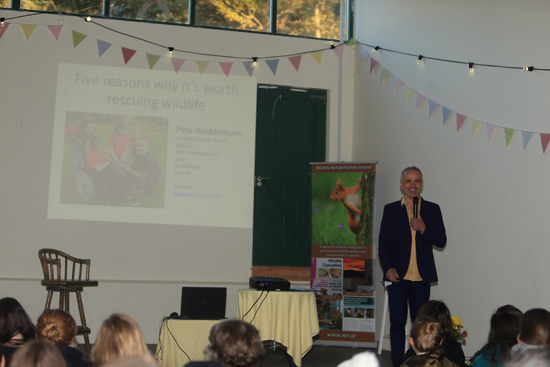
Pete Wedderburn
“The first reason for me is compassion for the individual creature,” says Wedderburn, who regularly sees wildlife patients at the BrayVet clinic. Concern for endangered species, picking up new skills to help other endangered creatures later on and raising awareness about the environment are some of the other reasons that Wedderburn is willing to treat wildlife. He also feels it helps to promote kindness in our society.
“The message of being kind to animals does eventually change our culture.”
Deciding whether to rehabilitate a sick or injured animal goes far beyond a love for wildlife, as stressed by all rehabilitators throughout the day. With each creature that comes their way, comes an ethical conundrum: should we leave the animal alone, try to heal it or consider euthanasia? Whatever the answer, the welfare of the individual animal and the likelihood of a successful release is key.
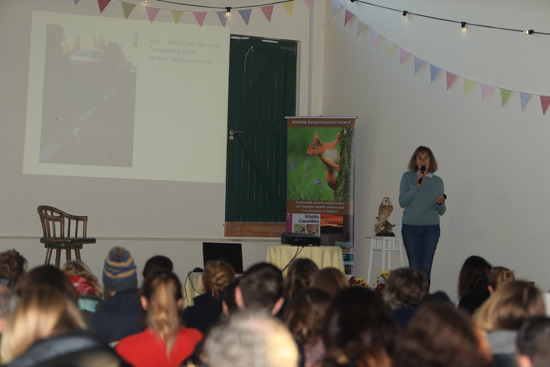
Liz Mullineaux
This is emphasised by vet Dr Liz Mullineaux in her own speech. She cites a definition of wildlife rehabilitation as the ‘treatment and temporary care of injured, diseased, and displaced indigenous animals, and the subsequent release of healthy animals to appropriate habitats in the wild.’
“Rehabilitation is not about captive animals. You need to keep that at the back of your mind at all times,” says Mullineaux, an experienced vet and Scientific Advisor to Secret World Wildlife Rescue.
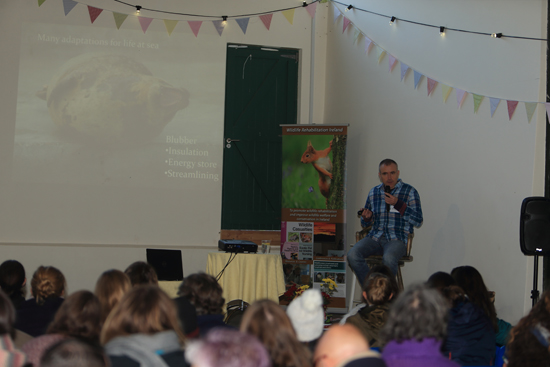
David Couper
There’s a fine line between wildlife rehabilitation and interfering with nature. While well-intentioned, members of the public often pick up animals they perceive to be orphans, unaware that the mother is nearby. Additionally, sometimes a single orphan is abandoned by a mother who is aware that it’s unlikely to survive.
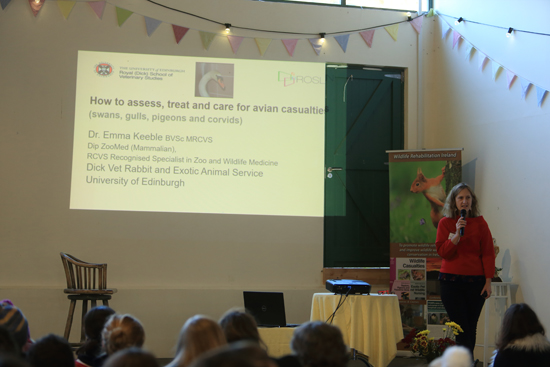
Emma Keeble
“We should only take an animal from the wild when absolutely necessary,” founder of Secret World Wildlife Rescue Pauline Kidner tells us, adding that we should really only interfere when a casualty is rooted in human rather than natural causes.
For the less-experienced, whether or not to intervene can be a difficult call to make. This is why observing an animal and liaising with those with wildlife knowledge is critical before a creature is moved.
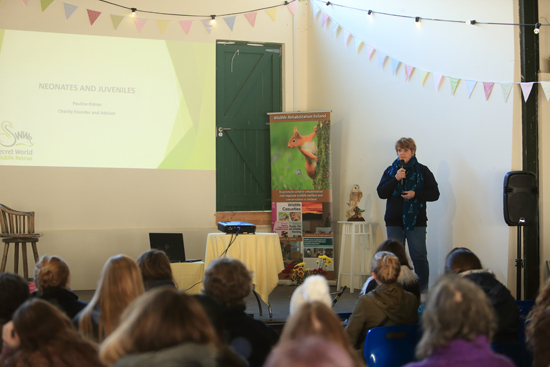
Pauline Kidner
Observing for blood, limb injuries, vision problems or breathing difficulties, as well as noting whether an animal is conscious, are just some of the things that can be noted down according to Mullineaux. These observations also apply to birds, as can fluffed up feathers and poor feather quality.
Not all potential patients are found at the roadside, as outlined in RSPCA Wildlife Veterinary Officer David Couper’s informative talk on seal rehabilitation. Does the seal have injuries; is it struggling to breathe; how alert is it and is the mother nearby are all questions that should be asked. Hydration levels can also be determined, according to Couper, who explains that a healthy seal will have tears flowing down its face when on land.
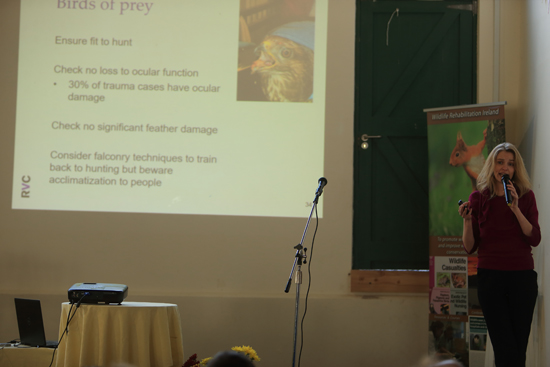
Jo Hedley
Deciding whether to rehabilitate an animal yourself or pass it on to others is largely dependent on experience, time commitment and resources at hand. Additionally, rehabilitation of wildlife casualties requires a licence in Ireland. For those who can’t tick these boxes, it’s usually in the animal’s best interest to transfer it to a trained individual or organisation as soon as possible. The Irish Wildlife Matters website contains a list of Ireland’s wildlife-friendly vets and rehabilitators who are happy to advise on safe transportation and take in casualties.
However, having a university degree in a wildlife-related discipline isn’t essential for those who wish to become wildlife rehabilitators. So how can people get involved?
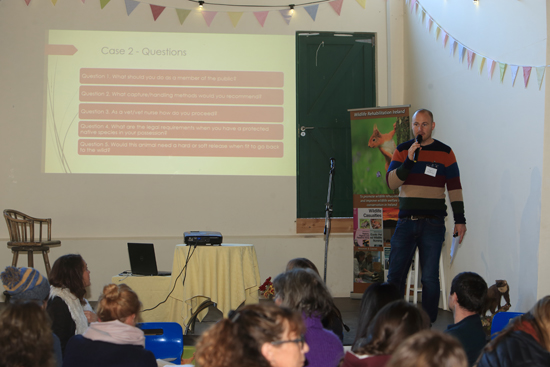
Kieran Corry
“People who want to get involved have natural empathy for animals anyway. But obviously, the best thing to do is come to a day like today so you can pick up advice and make contact with people who are going to help you,” Kidner tells me. “You’re going to start by deciding what your ethics are going to be. You have to decide whether you believe in euthanasia or not because that is the hardest question you are going to have. And you have to decide how you are going to do it because it can cost a lot of money.”
For those who do want to become a rehabilitator, WRI runs two-day Basic Wildlife Rehabilitation courses throughout the year, explains WRI chairperson Heidi Bedell. Such courses, in addition to the organisations, vets and other trained rehabilitators who donate their time for free, currently form the backbone of wildlife rehabilitation in Ireland.
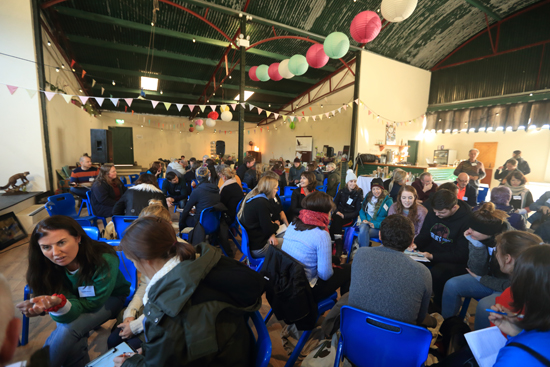
Group discussion
“In Ireland, we don’t have any location that anyone can bring or send wildlife to for something more serious like surgery or rehabilitation,” Bedell tells me.
This is all set to change. WRI are planning the establishment of a large National Wildlife Rehabilitation and Teaching Hospital. Based at a site in Fingal due to be donated by Fingal County Council following the completion of a feasibility study, it will contain enclosures and pools for animals, a conference space, an educational visitor centre and accommodation for volunteers.
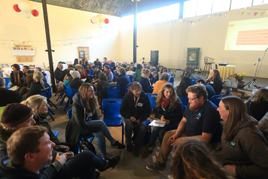
Group discussion
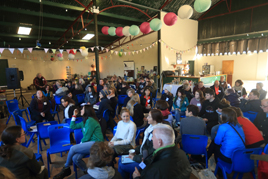
Group discussion
“It will also be a very valuable asset for universities,” explains Bedell. “We would hope to have students coming from universities who are studying some aspect of wildlife rehabilitation or veterinary practice. This could be a place where they can live and have stations where they can study and record wildlife.”
WRI will be seeking various sources of funding for the hospital going forward.
Speaking after the conference, Director of WRI Aideen Magee tells me that such an event is important for spreading the word about wildlife rehabilitation.
“We have everyone at it, from members of the public right up to people who do this as a profession,” says Magee, also a wildlife rehabilitator with Kildare Animal Foundation’s wildlife unit. “The more people we have in the community who are aware of wildlife rehabilitation, what it is and how to get involved, the more animals we can help.”
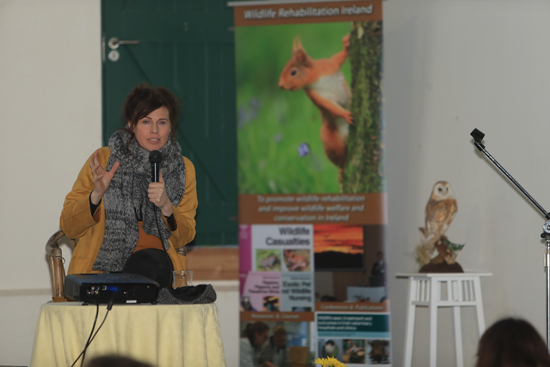
Mary Reynolds
Attendees at the conference all have their own backgrounds and unique motivations. Kildare Superintendent Martin Walker and his colleague and Wildlife Liaison Officer Garda Sharon McGinty came as they’re often called upon to assist with injured wildlife.
“Deer mortality is a problem, particularly at this time of year because you have the rut on,” says Walker. “Motorists should exercise care, courtesy and common sense.”
Walker also has much experience in tackling wildlife crime. In December, An Garda Síochána will run a training course to equip specially-appointed inspectors from each division with tools to recognise and deal with wildlife crime. These inspectors will work alongside the NPWS.
It’s obvious that becoming a wildlife rehabilitator requires much time and commitment. Yet, final speaker of the day Mary Reynolds gives a simple message that everyone can take on board: look after the land that supports us and our wildlife.
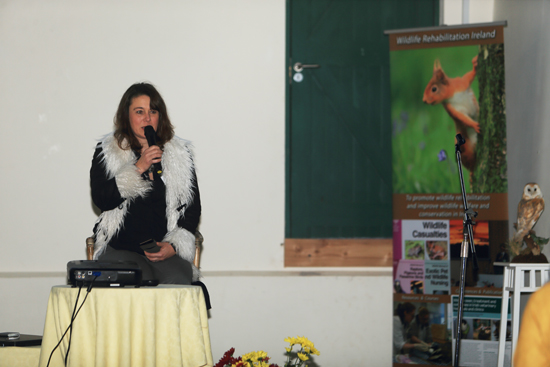
Heidi Bedell
“Rewild and remagic your garden,” says the award-winning gardener and author. “Allow it to become what it wants to become.”
Bedell hopes the key take-home message from the conference is one of kindness.
“Do we want to live in a world where it’s quite ok to see other creatures suffering? I don’t want to live in that kind of world, I don’t want my children to be brought up in that world,” she tells me. “I would like to promote that idea that it’s good to make that effort. Do stop, do get out, do help that animal that’s injured. It’s kind and that’s the world that we want to go into.”
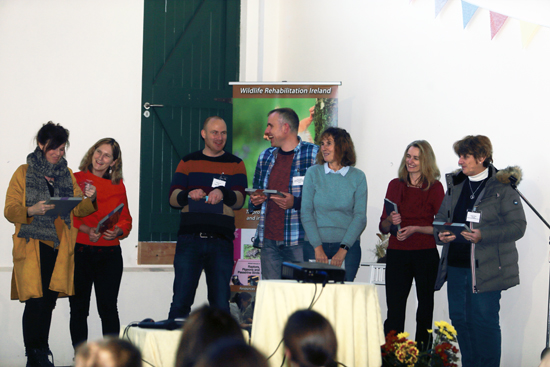
All speakers
TAKING ACTION
Director of WRI and wildlife rehabilitator with Kildare Animal Foundation’s wildlife unit Aideen Magee has a wealth of experience in dealing with wildlife casualties, from rescuing injured otters to nursing baby birds in her box room at home. For members of the public, who might be uncertain what to do if they find an injured or ill animal, she recommends taking the following steps.
“The very first thing is to ensure your own personal safety because if you end up becoming a casualty yourself, you’re no good to yourself or the animal either. Look at the context that you find the animal in. If it’s on the side of a motorway, always make sure it’s safe to stop and intervene,” she says.
“The next thing to do is to observe the animal for a while and see does it actually need intervention or not,” she continues, adding that sometimes seemingly abnormal behaviour is completely natural. “Particularly if they are in an area in which they are more habituated to people, they might not have the fight or flight response.”
If in any doubt whatsoever, she advises visiting the Irish Wildlife Matters website, finding your nearest wildlife-friendly vet or rehabilitator and contacting them for advice. When it’s something straightforward, they could guide you through how to safely handle that animal and transport it to the nearest expert. Otherwise, they might send out an experienced volunteer to assess and assist with the situation.
“If you’re a member of the public and haven’t handled these animals before, never try to do so on your own without getting expert guidance first,” says Magee. “If you don’t have somebody near you on that list, just look up your local vet. They may have contact numbers of somebody else who can offer guidance and assistance.”
Amy Lewis
Freelance journalist
www.amylewiswriter.wordpress.com
(First published in the Sunday Business Post on November 4 2018. Available online at: https://www.businesspost.ie/magazine/irelands-wildlife-warriors-429332)
WITH THANKS TO :
The Veterinary Council of Ireland

This conference has been accredited by the
Veterinary Council of Ireland
for 7 CVE credits
……………..
Meath County Council

for a donation towards the cost of the conference

